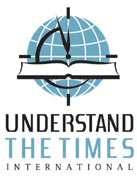The federal government is making progress on developing a surveillance system that would pair computers with video cameras to scan crowds and automatically identify people by their faces, according to newly disclosed documents and interviews with researchers working on the project.
The Department of Homeland Security tested a crowd-scanning project called the Biometric Optical Surveillance System — or BOSS — last fall after two years of government-financed development. Although the system is not ready for use, researchers say they are making significant advances. That alarms privacy advocates, who say that now is the time for the government to establish oversight rules and limits on how it will someday be used.
There have been stabs for over a decade at building a system that would help match faces in a crowd with names on a watch list — whether in searching for terrorism suspects at high-profile events like a presidential inaugural parade, looking for criminal fugitives in places like Times Square or identifying card cheats in crowded casinos.
In a sign of how the use of such technologies can be developed for one use but then expanded to another, the BOSS research began as an effort to help the military detect potential suicide bombers and other terrorists overseas at “outdoor polling places in Afghanistan and Iraq,” among other sites, the documents show. But in 2010, the effort was transferred to the Department of Homeland Security to be developed for use instead by the police in the United States.
The Department of Homeland Security tested a crowd-scanning project called the Biometric Optical Surveillance System — or BOSS — last fall after two years of government-financed development. Although the system is not ready for use, researchers say they are making significant advances. That alarms privacy advocates, who say that now is the time for the government to establish oversight rules and limits on how it will someday be used.
There have been stabs for over a decade at building a system that would help match faces in a crowd with names on a watch list — whether in searching for terrorism suspects at high-profile events like a presidential inaugural parade, looking for criminal fugitives in places like Times Square or identifying card cheats in crowded casinos.
In a sign of how the use of such technologies can be developed for one use but then expanded to another, the BOSS research began as an effort to help the military detect potential suicide bombers and other terrorists overseas at “outdoor polling places in Afghanistan and Iraq,” among other sites, the documents show. But in 2010, the effort was transferred to the Department of Homeland Security to be developed for use instead by the police in the United States.












